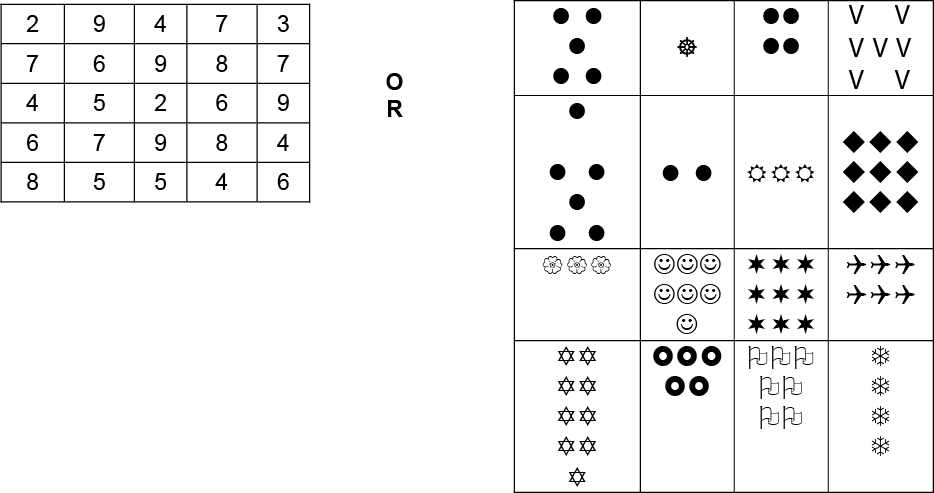B1.1 Read and represent whole numbers up to and including 50, and describe various ways they are used in everyday life.
Activity 1: The Number Scale (Represent)
Directions
- Lay out a tiled mat measuring 10 x 10. Label each column with numbers written in numerals.
- Explain to students that each of the numbers listed will be represented in as many ways as possible and that the different representations will be placed in the appropriate column boxes.
- Lay out materials in front of students that can be used to represent these numbers in different ways; for example, cards with the names of the numbers, interlocking cubes, Rekenreks, dot plates, five or ten frames.
Ask students the following questions:
- Which representations were easier to find or make? Why was this?
- Which numbers are easier or harder to represent? Why is this so?
- What is different between these two representations of number?
Source: translated from Guide d’enseignement efficace des mathématiques de la 1re à la 3e année, Numération et sens du nombre, p. 77-78.
Activity 2: Game (Anchor Points)
Players
2 players
Materials
- a number grid*
- a die
- 3 counters per player
* The grid can be filled with numbers or drawings.
Goal
Cover three consecutive numbers forming a horizontal, vertical, or diagonal line.

Directions
Players take turns rolling the die and determining how many more they need to get to 10; for example, if a player rolls 8, they need 2 to get to 10. The player places a token on a "2" in the grid.
Note: It is very important to model the game in front of the students. This step introduces the vocabulary to be used and helps students to better understand the game.
Source: translated from L’@telier - Ressources pédagogiques en ligne (atelier.on.ca), p. 5.
Activity 3: Dot Plates
Materials
- Appendix 1Q.4 (Dot Plates)
- paper plates (about 30)
- bingo stickers or markers
- number cards from 1 to 10 (5 packs)
Use Appendix 1Q.4 as a guide to prepare number plates with dots using stickers or bingo markers.
Use plates as flashcards during group activities.
Show a plate for only a second, then ask students the question, "How many dots did you see?
Have students:
• match the dot plates to the corresponding number cards
• to put the plates in ascending or descending order according to the number of dots.
Also offer students the opportunity to use the plates to play games with their peers during free activities.
Source: translated from Guide d’enseignement efficace des mathématiques de la 1re à la 3e année, Numération et sens du nombre, p. 106-107.
